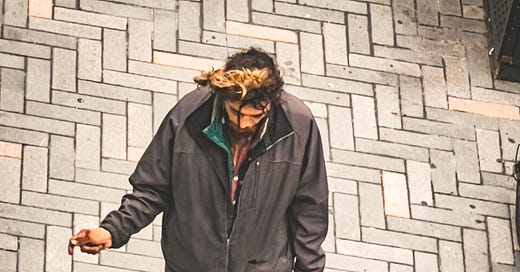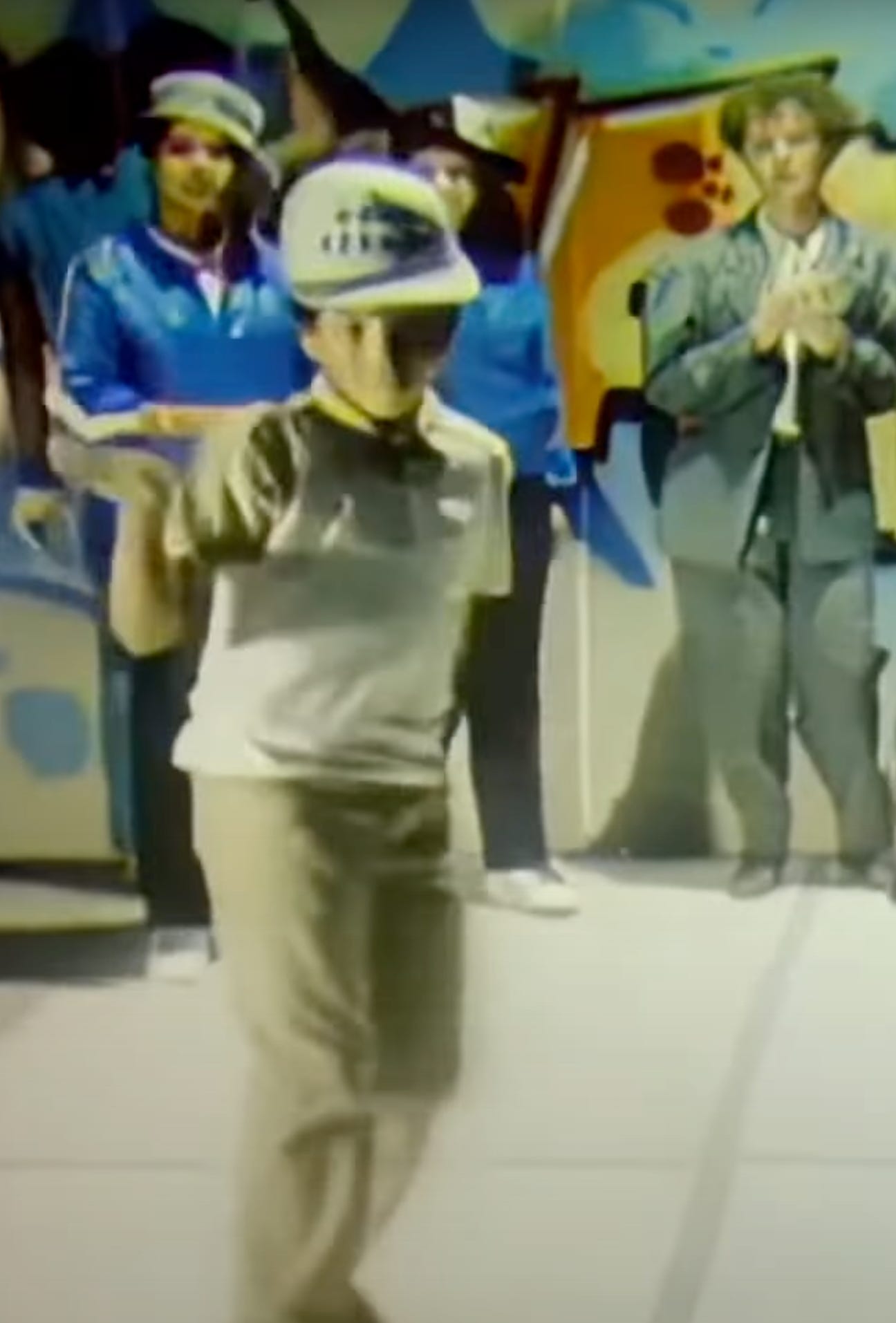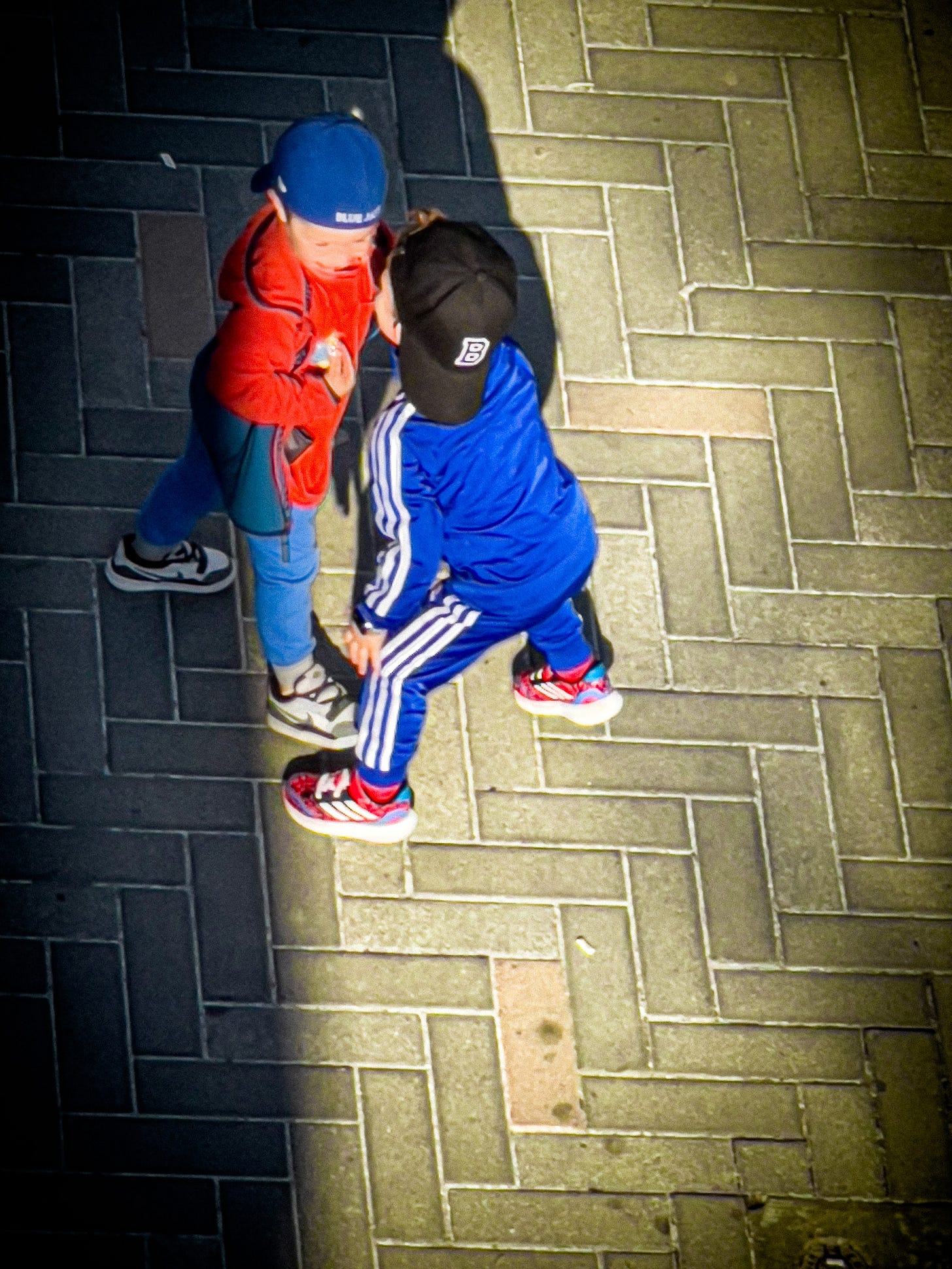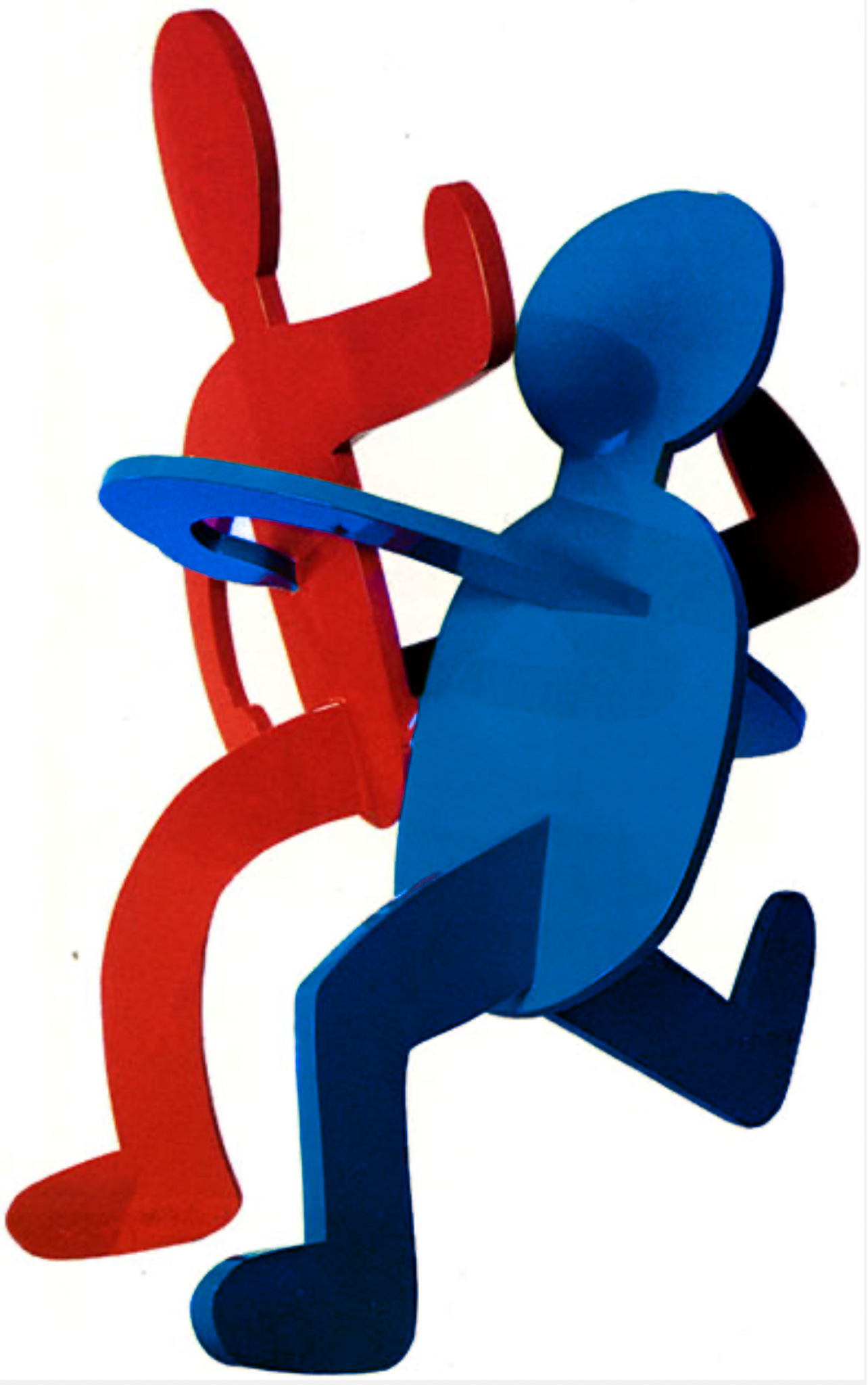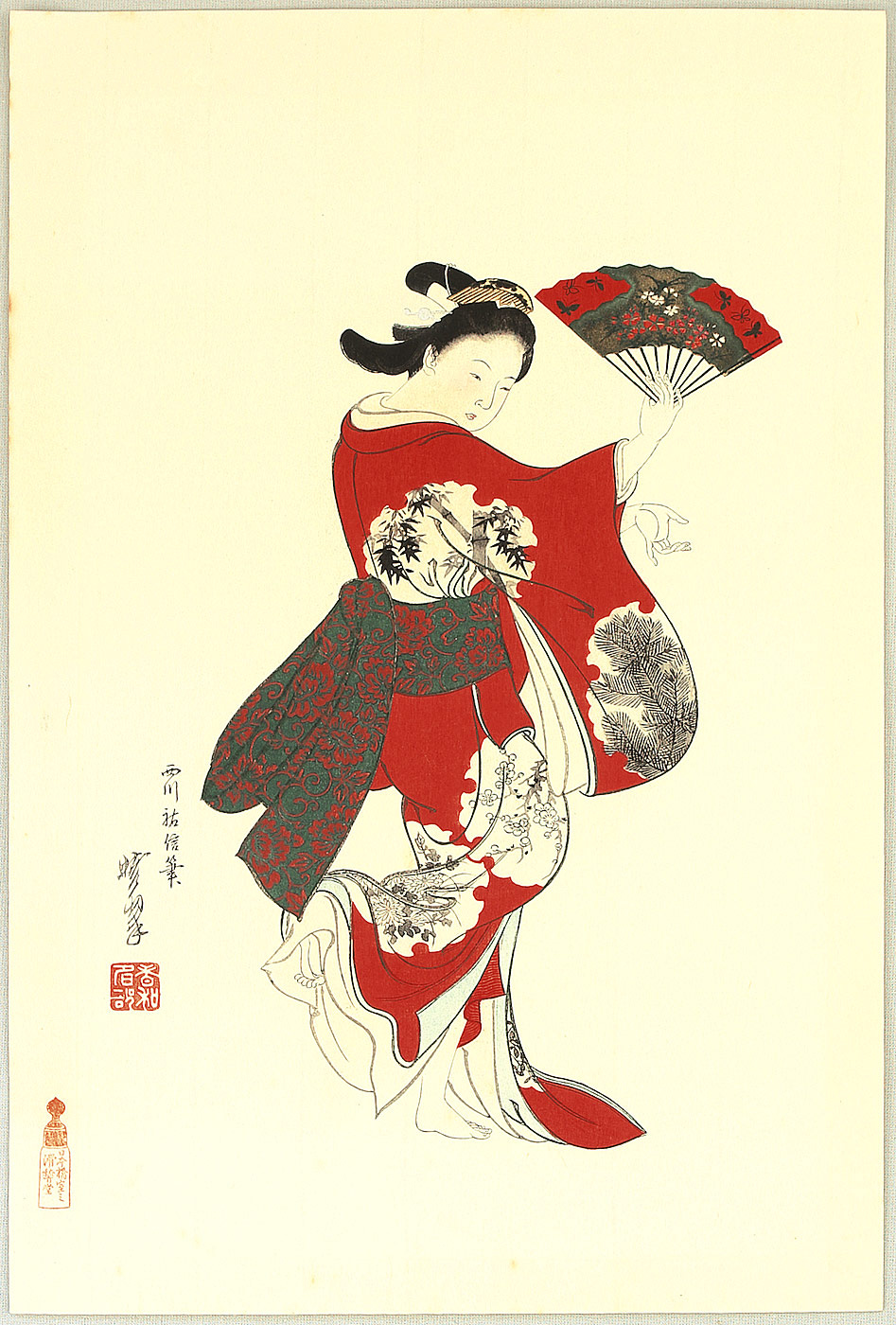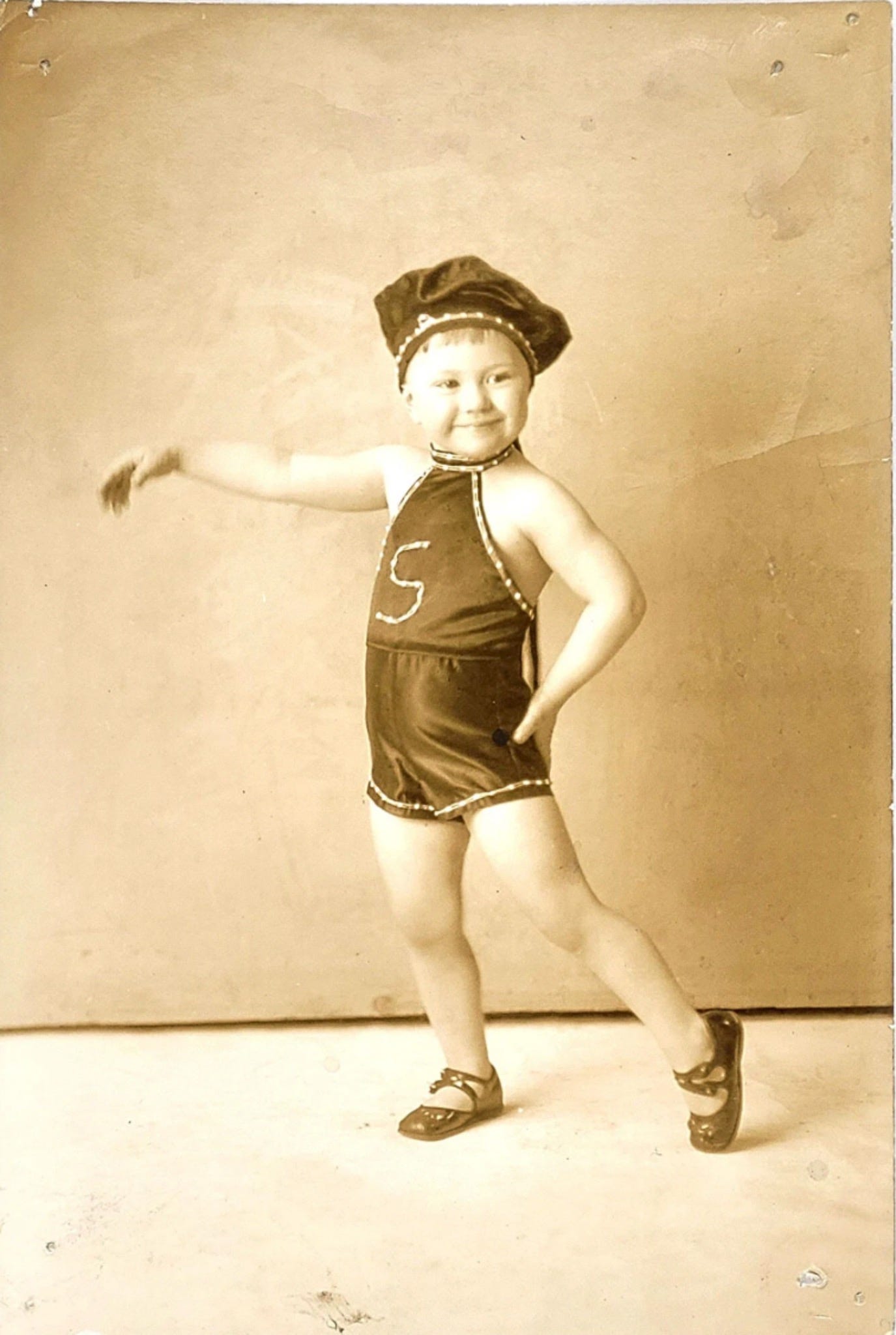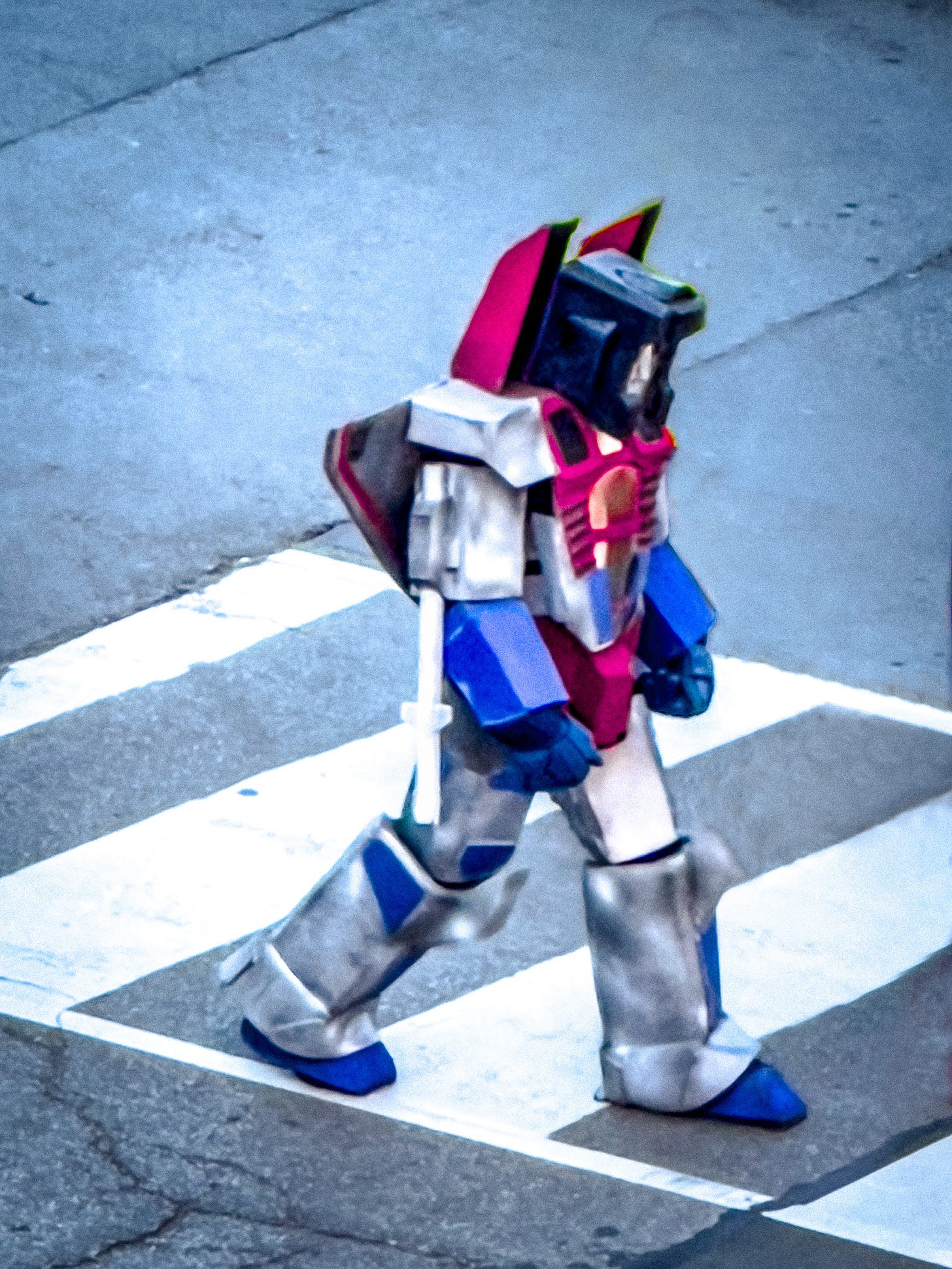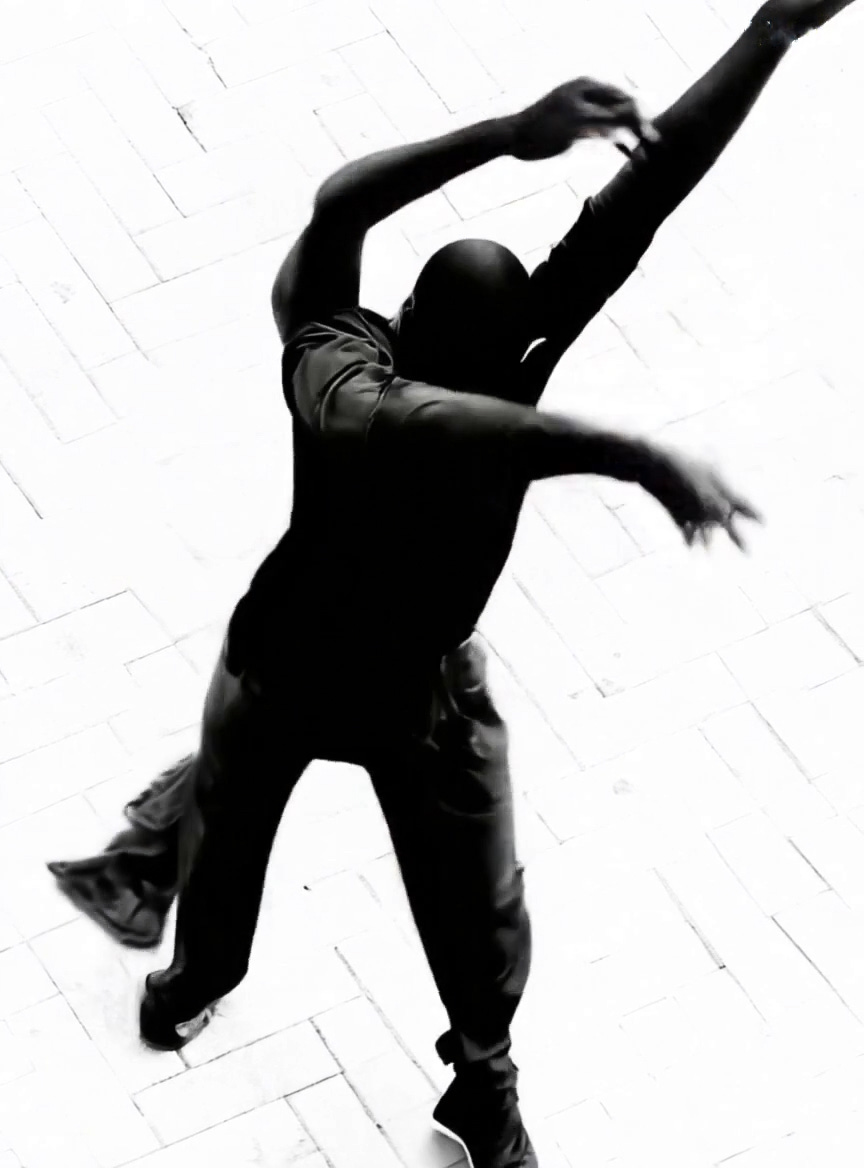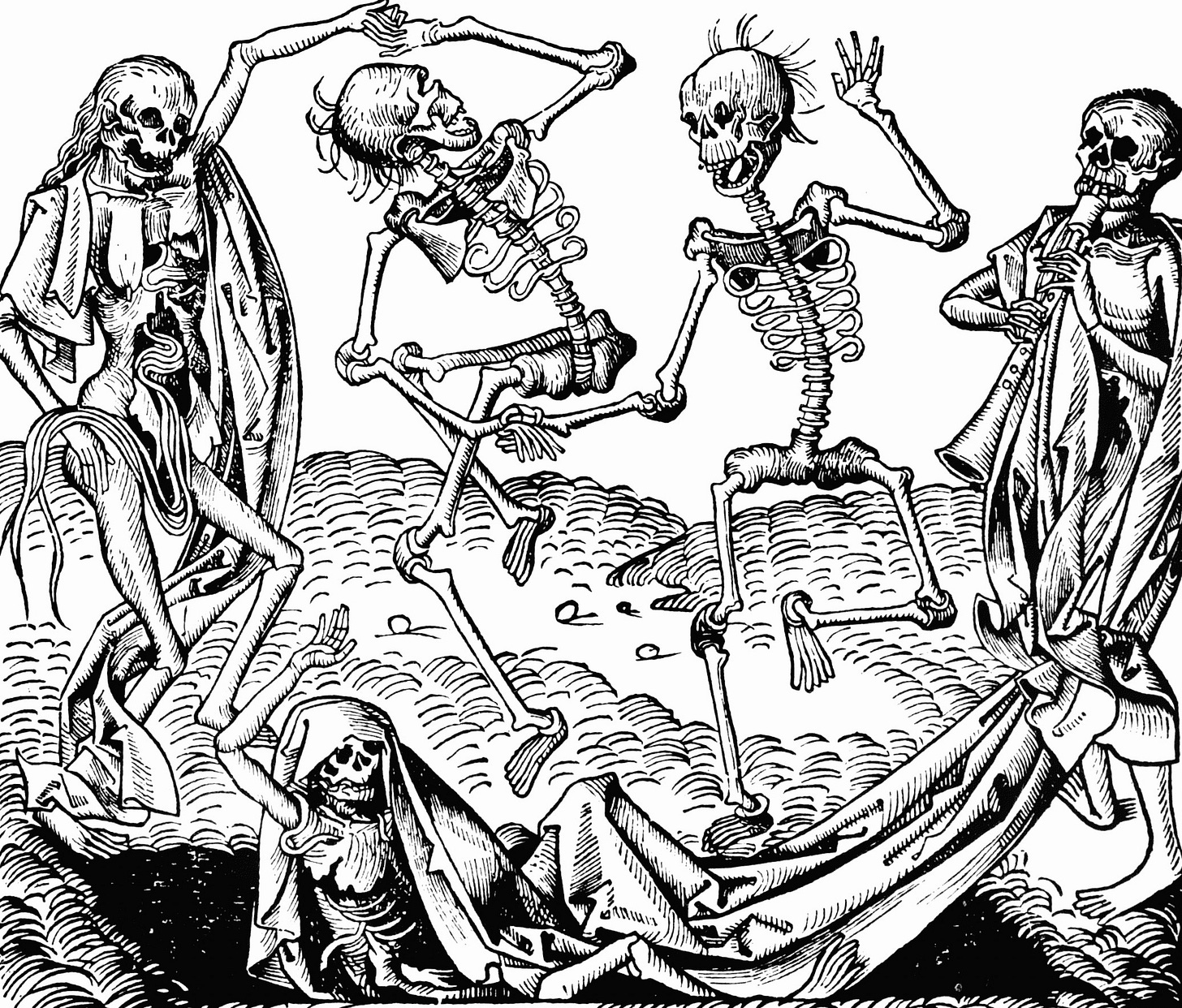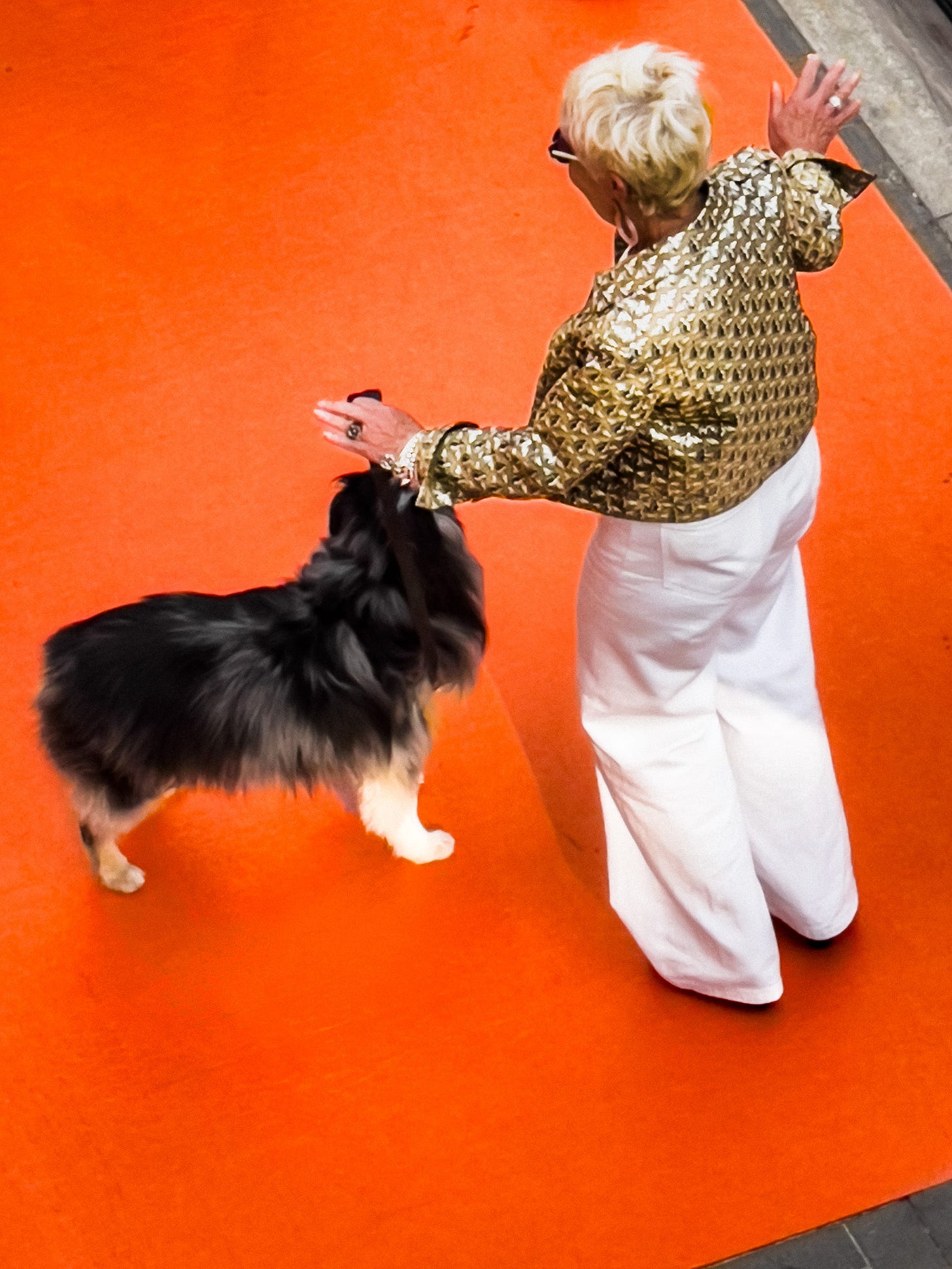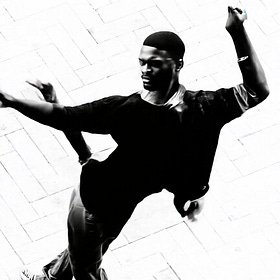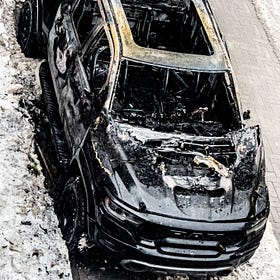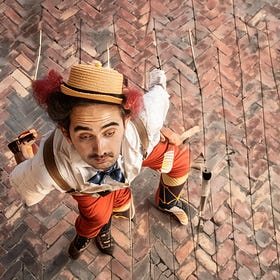“…And I danced in the moon and the stars and the sun” -- Sydney Carter “Lord of the Dance” (Pt. 1 HERE.)
TL;DR- just compare/contrast the pic’s synchronicities…
“Dance, when you're broken open. Dance, if you've torn the bandage off. Dance, in the middle of the fighting.” - Rumi (poet/dervish inspirer)
Dancing is fun but dancing is pain. Toes deformed, ankle ligaments stretched or torn, cracks and stress fractures in bones, knee aches from improper patella tracking, popping hips, vertebra chips. And that’s just ballet. (The movie “Suspiria”, a film set in a dance academy covertly run by a coven of witches, depicts this unsettlingly well — the dancer’s bones snapping as she dances — as do the lyrics from the movie’s title song “Suspirium”, quoted Part One).
Breakdancing has its own unique pains — not surprising considering it was done initially on pavement or concrete. Bones on stones. You could literally break your neck flipping to a headspin from your back (and which actually happened in at least 3 documented cases). Breakdancing started in the Bronx in the ‘70s but was worldwide by the ‘80s (thanks to music videos like “Buffalo Gals” by British cultural-catalyst-slash-appropiation-afficianado Malcolm Mclaren), and helped youth everywhere express themselves without resorting to fights or violence. But you still suffer for the fun — cardboard or linoleum doesn’t cushion concrete.
I was a curious suburban kid who just liked to move (and loved beats — Bambaataa, Flash), so I taught myself to breakdance from basically three music videos. (I also had physical tricks acquired from years of gymnastics, trampoline, skateboarding, wrestling, judo, tae kwon do, and volleyball that could be adapted or sampled. Even soccer helped — the kicks sure improved my backspin speed). So: cardboard on the oily concrete garage floor.

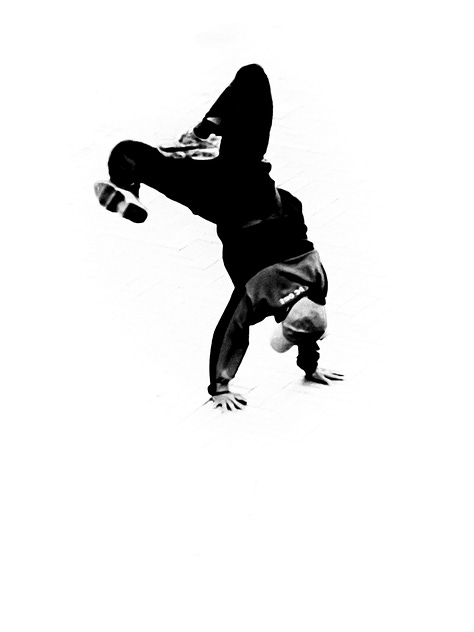
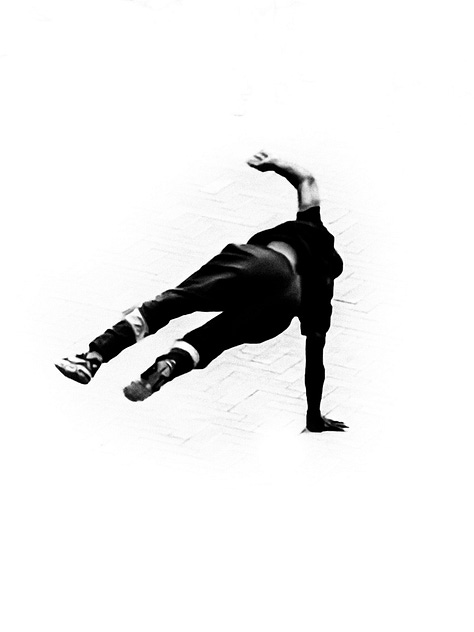
The only way to dance is to let it all go.''- Fred Astaire
I incurred most of my injuries while downrocking (the ground stuff), mostly practicing/inventing, but also later while performing and teaching. I distended a finger, sprained a wrist, had a warm grapefruit-sized elbow for weeks; permabruised my knees from drops, spins and worms, often had sore hips (after hours of windmilling), got upper-back burns and scrapes from backspins, and had lotsa neck pulls and head conks and bonks from headspins. (I didn’t develop a bald spot though, as some guys did, because, even wearing a beanie — the only protective gear you’d ever dare to wear — I just didn’t enjoy body-weight fontanelle balancing). Asphalt is a harsh mistress and she cackles loudly at contusions; she adds an extra chuckle or two for a cranial callus. But breaking was ineffable embodied ecstasy. Who needs to think when your feet just go…
Though dance “battles” were a thing, no one got injured by another breaker, because it was a non-contact solo escalation of moves. ChatGPT expounds thusly: To intimidate rivals in confrontational dance-like displays, males stamp feet, puff out chests, fan tails and do other moves like flaring feathers. OK, the AI said that about sage grouses and manakin birds, but you could also say it for the species known as B-Boys. (Except the feathers bit — that would apply more to Voguers in walk-offs at their Balls.) Anyway by 2024 breakdancing had become a sport at the Paris Olympics (ignore that Australian gal), with trainers and medics and taping and icing and such, and they were doing their moves on a sprung or cushioned subfloor. Peasant dances on dirt to royal ballrooms in Bavaria (“Confessions” Pt 1 callback).
“Dancing is the one thing you can do to control your own body” -Alvin Ailey (dancer/choreographer)
Pencak Silat* is another type of fight-dancing, from Indonesia. It has elaborate costuming, faux strikes, throws and grappling but very real acrobatics, and is done solo or in choreographed pairs. Capoeira, from Brazil, is also a form of choreographed combat, a martial art that combines kicks, takedowns, and acrobatics. It originated during the 16th century as a form of cultural expression and self-defence for enslaved people, and so had to be disguised as a dance. Defiance of difficult circumstances generates great dances — from Brazil to the Balkans, from Krumping* to Mazurka*, from sway (Capoeira) to sashay (Voguing) — despite cultural, economic, sexual, physical, and mental oppression, you still have moments to control your own body, and create.
“Never give a sword to a man who can’t dance” - Confucius (dancer/choreographer of ethical conduct)
Dancing with weapons has been done throughout Asia, Africa, the Americas, and Europe for thousands of years. The Scottish Highland Sword Dance is performed over two broadswords crossed on the ground in an "X". It used to be exclusively done by men, but now is performed primarily by women (skirts, however, are worn by both genders for practicality and movement). Jian Wu is a Chinese sword dance traditionally done by both men and women, where dancers wield double-edged swords and do martial arts (pants, however, are worn by both genders for practicality and movement).
The Haka is a traditional Maori ceremonial dance which involves clubs, stomping, chanting and ferocious tongue extensions. Zulu dancers do the same but with shields and spears (and without the aggressive oral-organ displays). Neolithic dancers in Anatolia danced with bows (according to more rock art). In Asia there were dances with metal and iron-spoked fan-weapons (which later became folding-paper fans in softer performances; while the emphasis is on grace and elegance, there are still fast-snap opens, thrusts and cutting movements).
Weapons-dances are like hunting-rituals. They are training exercises, movements done without actual injury but which still allow the programming of muscle memory. They are storytelling events to pass on historical knowledge of past battles; prestige performances (mating and strength displays); confirmation of power and authority of the King or clan; and they are poetic and spiritual illustrations of the cycle of life and death. Also, thrilling to watch. Just as in our contemporary war dance, pro-wrestling, you understand that the performers are highly-trained but there is still the tension of will they break a bone from being hit by that chair / lop a toe off dancing with that sword?
“Choreography is writing on your feet” - Bob Fosse (dancer/choreographer/smoker)
Besides swords and fans, some other props used in dances are: chairs (a la Flashdance, and pro-wrestling), umbrellas, (Gene Kelly, a New Orleans Second Line), giant champagne glasses (Burlesque), poles, bubbles, ribbons, ropes, whips, scarves (various “adult” clubs, Eastern Europe, and, again pro-wrestling), canes and hats (Bob Fosse’s choreography for Cabaret*, for example), fire (Polynesia, and every full-moon rave), tentacles and/or giant slinkies (Cirque De Soleil, and probably Japan).
Stilts are a prop used in African*, Spanish and Chinese traditional dances to create a bigger presence. Mask are used universally to create bigger characters. Wigs and hairpieces are used everywhere to create bigger movements — from horse hair worn in North American Indigenous costumes to hyperhair in stylized wigs for drag performances to Martha Graham’s follicle-inclusive choreography. (Pro tip: in one stop, you can see all these dance-enhancing-objects wielded at the world’s biggest dance buffet, and buffet buffet: Las Vegas. Note though — some places may be less well-lit and… sweatier than others).
“Any movement is possible for dancing” -Merce Cunningham (dancer/choreographer)
There are only so many ways that the human body can move. One Duchampian innovation by Merce Cunningham was to open up dance’s vocabulary to include readymade actions — say, ordinary movements like fingernail filing — in his choreography. (This also happened with music; when sampling came along suddenly a finite amount of notes was expanded to where any everyday sound — a car starting, a dental drill — could be used as rhythm or melody in a song.) With each new style of music new moves are invented, and dances evolve (and vice-versa). There are hundreds of new micro-trend dances on Tik Tok uploaded everyday… but at some point, will every move have been used, every dance possible have been done?
“Free your mind, and your ass will follow” - Funkadelic (George Clinton, musician/Parliament-er).
It was surprising, and heartening, to see how much public “dancing” and dancing (i.e the Tango-ers) there was as I curated this set of images from The Window collection. People dancing-in-quotes throughout their day, beautiful ordinary motions and moments which bore uncanny similarities to formal, historical, contemporary, and street dances. (Like how the boy with the Minecraft sword being wrangled by his mother above echoes a traditional Jian Wu pose, the passerby in the photo just above is like a drone shot of Merce Cunningham, or how the construction worker a few shots below is channeling voguer Willi Ninja).


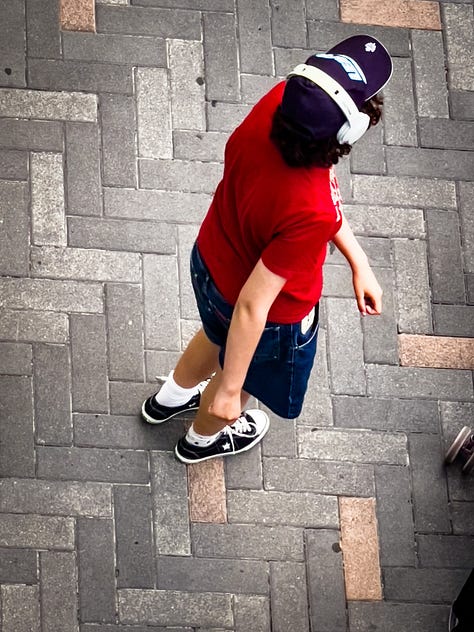
Of course people may not be moving spontaneously, it may be a firing of muscle-memory or an unconscious iteration of something they have seen somewhere. Professional dancers do this all the time (but consciously, or actively) in everyday life, but especially professionally: Michael Jackson cribbed his moonwalk from breakdancers, who bit it from Soul Train dancers who stole it from James Brown, who purloined the backslide from tap dancers like Billy Bailey (he did the first documented moonwalk* in 1955), who nicked it from earlier tap and vaudeville performers, who in turn ganked the glide techniques of illusion and mime dancers in the 1800s (like Jean-Baptiste Gaspard Deburau)… Nothing is new, but also, nothing is old. Everything evolves, there’s always a new spin.
Even if every possible movement of muscle and sinew and bone has at some point been danced, technology will enable motion innovations and inspire new dances. Virtual-reality suits and digital environments will allow impossible (and fontanelle-safe) dancing — our avatars will headspin on the tip of the Empire State Building’s spire, waltz up Mount Everest, or do a Zangbeto in zero gee. (People have been doing 120 mph wind-tunnel dances* for at least 10 years, vertical ballets in the air; synchronized swimmers have already done the moonwalk suspended upside down in a pool*…) Odds are good the weightless-illusion-walk MJ made famous will actually be performed on its namesake within a decade or two. Danced ourselves right on the moon.
Exoskeletons will enable hypersonic pirouettes. Prosthetics made of carbon fibre or titanium will allow house-high leaps. The University of Cambridge just announced The Third Thumb for the hand; finger-tutters* around the world fainted for the jazz-handing possibilities. (So too bricklayers; see previous set’s post “Nebuchadnezzar”). And of course, robots: at some point there will be an android Nureyev, a cyborg Baryshnikov.

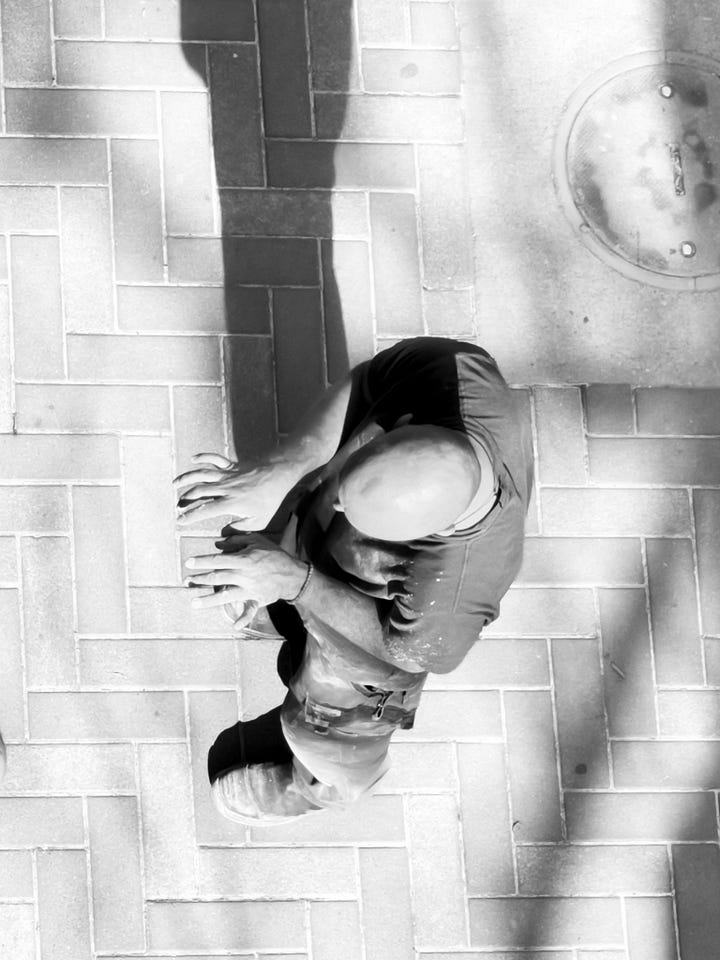


Body augmentations will inevitably give transhumanist enthusiasts joints and muscles that will enable 360 degree neck or elbow or hip rotations. (I’ll name the dance now: The Exorcister). Suspiria made real. Biotech might allow control of skin at a cellular level — rhythmic ripples or patterns, timed to the music, traveling around the body. Pain will be nullified by neural links, or, with nanotech cell bots, injuries healed as they occur. Maybe we’ll see bio-engineered human beings: six-legged highland dancers, or a performer with four arms — a living, breathing, dancing Shiva.
“A dancer dies twice -once when they stop dancing, and this first death is the more painful" -Martha Graham
Dancing (even virtually) makes us think about our bodies, our biological limitations — ability, age, inherited traits, vulnerability, mortality. The "Danse Macabre" is an allegorical art form, drawings and paintings from the Middle Ages (possibly inspired by the Plague) that depict Death leading members of society — typically an eminent figure, like a Pope or Emperor, and regular folk like a labourers or a child — as skeletons dancing to their graves. The illustrations are often gruesome, sometimes terrifying. But also: kinda funny. So over-the-top that you laugh, nervously, even defiantly, just like we do at those ghosts dancing in the Disney haunted mansion. During Earth’s most recent plague, where wide-spread death from Covid-19 seemed likely, and human-contact was very restricted, a video was posted on social media of two people tapping feet instead of shaking hands. This was so awfully awesome that it inspired a complex foot-smackin’ joke dance (the “Wuhan Shake”) which went viral and was watched, and practiced, by millions as they hid at home, dancing despite, or in defiance of, death.
“Life is a square dance / You stop. But mostly you go. (Oh, do si do)” - K.I.A., Box the Gnat
Many cultures have dances of death and aging, like the Danza de los Viejitos which is the whimsical Mexican Dance of Old Men*, performed by older gentlemen in masks and with canes. It fondly mocks them, but simultaneously acknowledges them as elders who can pass on knowledge to the next generation. Japanese Noh theatre often depicts aging through slow and measured movement to symbolize wisdom and longevity (not just of a single life but of a culture through tradition), as in the performance Okina*, which dates back to the 14th century. Due to the spiritual gravitas of the movement, its actors must undergo extensive training before being allowed to perform the work, and Okina audiences are expected to watch with reverence — the performance is treated more like a moving prayer or purification ritual than just as entertainment.
Thinking about this waltz of words, this ikariotikos* of images, I asked various friends and family what memories they had of dancing. Every answer was about a joyful moment: At kindergarten out on the grass, learning to square dance, locking elbows, spinning and laughing and falling down. My first summer camp, I’d never danced ever, moved in a rigid grid, thought I was hot shit! At a basement party as a teenager — a shag rug, a strobe light, a great beat, and body heat. Mosh pit in Seattle, best concert ever, danced for hours on a broken foot. 12 hours of raving in a warehouse outside London, changed my life. A full-moon party in Nepal, with backpackers from all around the world, magical, felt like I was dancing in the sky. A Uni party where they guys had to Napoleon Dynamite* and the girls could only do the Elaine* dance from Seinfeld. My Henna, a Moroccan tradition before a wedding, so much fun, everybody dressed in their fancy kaftans, and bellydancing. Dancing with my daughter at her wedding 2 years ago — I secretly took months of lessons beforehand. Just now — I did “I’m a Little Teapot” with my grandson!
“I danced myself into the tomb” -Marc Bolan (T-Rex “Cosmic Dancer”)
A little girl’s first twirl, a teenage boy’s best backspin, a Dervish’s ancient devotional whirl, an aging dancer’s last adagio. Shirley Temple became famous at 6 years old for her stair routine. Christopher Walken was 60 when he danced throughout Fatboy Slim’s “Weapon of Choice”* video. Eileen Kramer (Australian, don’t ignore this gal), performed until she was 108* — her last dance was from a chair, a week before her death in 2024.
May we all dance from the womb right through to the tomb. (Then rest for a while, and when we hear the music start up again, come out nodding and bobbing and dancing, smiling up at our singing mothers).
NOTES:
*Links to video views of some of the above: Early Breakdancing (Buffalo Gals). Later Breakdancing!. Finger Tutting. Finger Breakdancing!. Krumping. Mazurka. Voguing. First recorded moonwalk. African Stilt Dancers. Fosse - Cabaret. Japanese Synchronized Walking Dance. Scottish Sword Dance. Pencak Silat fight dance. Wind Tunnel Dance. Underwater moonwalk. Old Man Dancing. Dance of the Old Men. Japanese Okina Dance. Christopher Walken-Weapon. 108 year old dancer Ikariotikos Dance. Napoleon Dynamite. Elaine Dance.
“Dance like no one’s watching, love like you’ve never been hurt, sing like no one’s listening, and live like it’s heaven on Earth.” -Multiple attributions. I’ve avoided using this quote because it’s such a cliche, but I know everyone’s been waiting for it. Anyway it sincerely parallels the feeling of the found-dance images above, as well as one of my favourite dance videos, where Spike Jonze directs an exuberant amateur community dance troupe in one of the first-ever flash mob / public guerilla-style dances; rejected by MTV initially, (it only cost $800 and looked like it), it went on to win all sorts of awards: Praise You
Bob Fosse's signature moves are characterized by sensuality and precise execution, included turned-in knees, sideways shuffling, rolled shoulders, hat play, and the splayed-finger shaking and sometimes dreaded/beloved "jazz hand". He choreographed Chicago, All that Jazz, etc. (BTW Michael Jackson ripped him off too; see this compilation of gifs featuring Fosse’s as the snake in the movie “Little Prince” to see the odd but proto-MJ moves).
Martha Graham’s signature moves are characterized by angular, sharp, and percussive movements, particularly contraction and release and spirals with a strong emphasis on the spine. Visual Art collaborations: She worked with minimalist sculptor Isamu Noguchi (he did her set design). Graham mentions she was inspired by Kandinsky’s painting Improvisation No. 30. Warhol made screen prints of her Satyric Festival work (see the photo with the flying hair above).
Merce Cunningham's signature moves are a unique blend of ballet technique and non-representational choreography, characterized by simultaneous movements of different limbs and torso, and a focus on spatial awareness and rhythmic accuracy, and which incorporate everyday actions and chance procedures. Visual Art collaborations (on sets): Robert Rauschenberg, Jasper Johns, Roy Lichtenstein, Frank Stella…
The Window is an ongoing complex visual dance about the 21st century; each unstaged photo in the series is an improvised step, each exhibition a carefully choreographed dance…

PREVIOUS POSTS (random):
confessions of a breakdancer (Pt.1)
…And what they mean / For our salvation” - Thom Yorke, Suspirium.
BONUS IMAGE:
Reprise, from “Confessions of a Breakdancer Part 1” : Below is a (dance) video from the “Yes Horses They Fly” set of still images from The Window, using AI to generate movement:
K.I.A. art site: weatherworks, genetically modified paintings, new media motion poems, remixable installations and other stuff.

